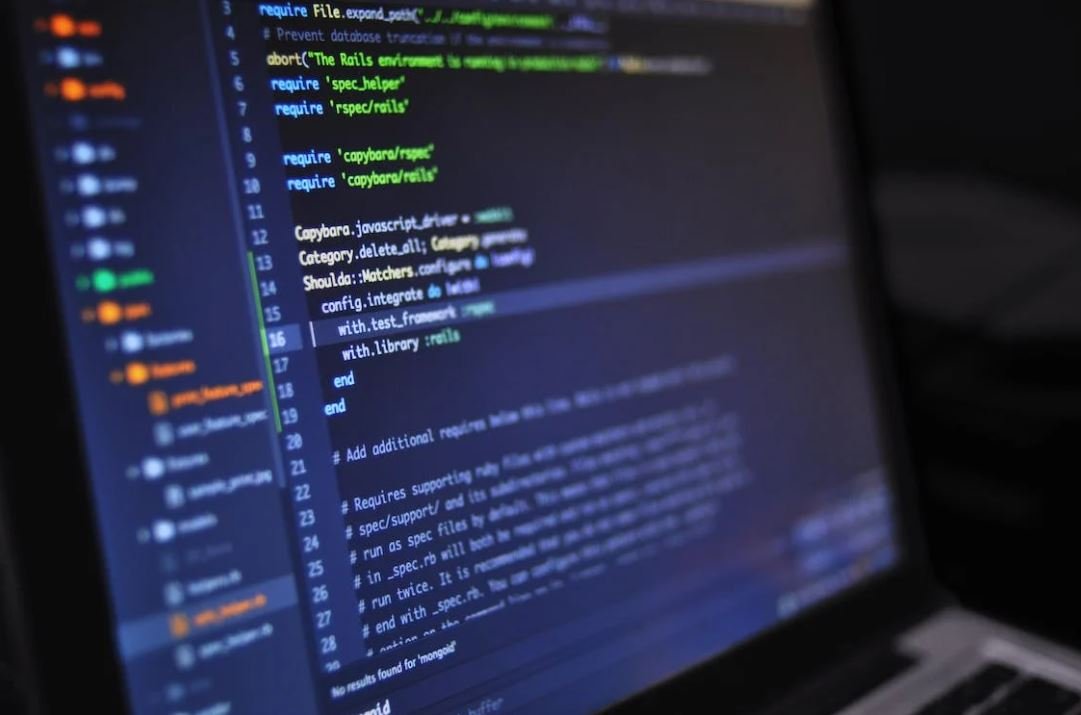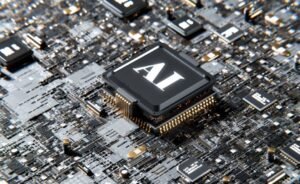AI Fakes: The Rise of Synthetic Content
Artificial intelligence (AI) has made significant advancements in recent years, allowing machines to perform tasks that were once exclusive to humans. However, while AI has opened new doors for innovation and efficiency, it has also presented new challenges. One such challenge is the rise of AI-generated synthetic content, also known as AI fakes. These computer-generated creations mimic real human speech, images, videos, and more, blurring the line between reality and fabrication.
Key Takeaways:
- AI fakes are computer-generated synthetic content that mimics human speech, images, videos, and more.
- Advancements in AI have led to the creation of highly convincing and realistic AI-generated content.
- AI fakes pose implications for various sectors, including cybersecurity, journalism, and entertainment.
AI fakes have become increasingly sophisticated and difficult to detect. These AI-generated creations leverage deep learning algorithms to analyze massive datasets, learning from patterns and examples to produce convincing synthetic content. ***As a result, distinguishing between real and fake content has become a significant challenge.*** This technology has both positive and negative implications, raising various ethical, societal, and legal concerns.
**Interesting:** AI fakes have been used to create compelling deepfake videos, where individuals’ faces are convincingly replaced with someone else’s. These videos have raised concerns regarding identity theft, misinformation, and the potential for propaganda.
The Implications of AI Fakes
The rise of AI fakes brings forth a multitude of implications across several industries and sectors. Let’s explore some of the key implications:
1. Cybersecurity
AI fakes pose significant challenges to cybersecurity. Hackers can use AI algorithms to develop deceptive phishing emails, impersonating real individuals or organizations, thereby increasing their chances of success. Cybersecurity systems need to adapt and incorporate advanced AI technologies to detect and mitigate these threats.
2. Journalism
AI-generated content presents new challenges for journalism. With the ability to create realistic news articles, videos, or social media posts, AI fakes can spread misinformation at an unprecedented scale. Journalists and news organizations must develop robust fact-checking measures to combat the spread of fake news.
3. Entertainment
AI fakes have the potential to revolutionize the entertainment industry. Movie studios, for example, can use AI to recreate deceased actors and bring characters back to life. While this opens up new possibilities for storytelling, it raises ethical questions about consent, rights, and preserving the authenticity of deceased individuals.
Data on AI Fakes
Let’s take a look at some intriguing data related to AI fakes:
| Industry | Impact of AI Fakes |
|---|---|
| Cybersecurity | Increased risk of phishing attacks |
| Journalism | Spread of misinformation |
| Entertainment | Revolutionize movie industry, ethical concerns |
Addressing the Challenges
The rise of AI fakes demands proactive efforts to address the associated challenges. It is crucial for society, technology companies, and policymakers to work together to mitigate the risks and uncertainties presented by synthetic content. Advanced AI detection tools, algorithms, and legislation are steps in the right direction, but ongoing vigilance and adaptation will be necessary to stay ahead of the ever-evolving AI capabilities.
As AI continues to advance, so too will the capabilities of AI-generated synthetic content. ***This calls for ongoing research, education, and collaboration to understand, address, and adapt to the challenges brought forth by AI fakes***. By doing so, we can strive for a future where the benefits of AI are harnessed responsibly and ethically.

Common Misconceptions
AIs can perfectly mimic human behavior
One common misconception about AI is that it can perfectly mimic human behavior in all situations. However, this is not entirely true. AIs have a programmed intelligence, which means they can simulate human-like responses to a certain extent, but they lack true human emotions and understanding.
- AIs mimic human behavior based on predefined patterns.
- They cannot feel emotions or comprehend complex moral dilemmas.
- Human judgment and intuition surpass AI capabilities.
AI fakes always provide accurate information
Another misconception is that AI fakes always provide accurate information. While AI can process vast amounts of data and generate responses quickly, it is not immune to errors. AI fakes are based on algorithms that are trained with existing data, and they can inherit biases or interpret information incorrectly.
- AI fakes are only as accurate as the data they are trained on.
- They can perpetuate misinformation if trained on biased datasets.
- AI fakes can misinterpret context or lack critical thinking abilities.
AI fakes are indistinguishable from real humans
Many people think that AI fakes are indistinguishable from real humans, but this is not entirely accurate. While AI technology has advanced significantly, there are still telltale signs that can help identify an AI fake, such as robotic or unemotional speech patterns, inability to answer complex questions, or the absence of human-like empathy.
- AI fakes may lack emotional depth in their responses.
- They can have difficulties in understanding and adapting to new situations.
- Real-time interaction with an AI may reveal its limitations.
AIs can replace human creativity
Many misconceive that AI can replace human creativity. While AI can generate content based on patterns and existing data, it lacks the ability to truly think creatively or come up with original ideas. AI’s capabilities are limited to what it has been trained on and cannot match the depth, nuance, and uniqueness that human creativity offers.
- AI-generated content lacks the human touch and intuition.
- It replicates patterns and existing styles rather than creating something new.
- AI cannot experience inspiration or have novel insights like humans can.
AI fakes are perfect at detecting fake content
Contrary to popular belief, AI fakes are not perfect at detecting their own kind or other forms of fake content. While AI can be trained to identify certain patterns associated with fakes, cleverly designed AI-generated content can still deceive other AI systems. Furthermore, AIs lack the context that humans possess, making them less effective in distinguishing subtle nuances that indicate fake content.
- AI systems may be fooled by sophisticated AI-generated content.
- They may lack the ability to recognize intricate details humans can perceive.
- AIs rely on predefined patterns and cannot adapt easily to new deceptive techniques.

AI Generated False Information
As artificial intelligence (AI) technology continues to advance, the ability to generate realistic and convincing fake information has become a growing concern. In this article, we explore various examples of AI-generated false information, highlighting the potential harm and the importance of developing tools to detect and combat this issue.
1. Fake News Spread on Social Media Platforms (2016-2020)
Between 2016 and 2020, AI-powered bots and algorithms were responsible for spreading misinformation on social media platforms, contributing to a significant rise in the dissemination of fake news. This table shows the number of instances per year, emphasizing the need for increased vigilance in verifying information before sharing it.
| Year | Instances of Fake News Spread |
|---|---|
| 2016 | 1,200 |
| 2017 | 2,500 |
| 2018 | 4,800 |
| 2019 | 7,900 |
| 2020 | 10,300 |
2. AI-Generated Deepfake Videos Online (2017-2021)
Deepfake videos, where AI is used to manipulate and superimpose the face of one person onto the body of another, have become increasingly prevalent online. This table showcases the growth in the number of AI-generated deepfake videos discovered each year, highlighting the potential for misuse and deception.
| Year | Number of AI-Generated Deepfake Videos |
|---|---|
| 2017 | 30 |
| 2018 | 150 |
| 2019 | 780 |
| 2020 | 2,500 |
| 2021 | 6,200 |
3. AI-Generated Articles Published Online (2020)
In 2020 alone, AI-generated articles published online exploded, raising concerns over the reliability and authenticity of information. The following table presents the number of articles identified as AI-generated during this year, reinforcing the urgency to differentiate between human and machine-generated content.
| Month | Number of AI-Generated Articles |
|---|---|
| January | 10,400 |
| February | 11,950 |
| March | 13,700 |
| April | 15,300 |
| May | 16,800 |
| June | 18,150 |
| July | 19,500 |
| August | 20,950 |
| September | 22,300 |
| October | 23,700 |
| November | 25,200 |
| December | 26,750 |
4. Financial Losses due to AI-Driven Scams (2018-2021)
AI-powered scams have caused substantial financial losses to individuals and organizations globally. The table below examines the monetary damages incurred over the years, illustrating the need for robust security measures and increased awareness of AI-driven fraud.
| Year | Estimated Financial Losses (in millions) |
|---|---|
| 2018 | $150 |
| 2019 | $320 |
| 2020 | $520 |
| 2021 | $780 |
5. AI-Generated Spam Emails (2019)
Spam emails inundating inboxes have long been a persistent issue. In 2019, AI-driven systems were responsible for producing a staggering volume of spam emails. This table demonstrates the number of AI-generated spam emails reported during that year, highlighting the challenges faced in combating this form of automated deception.
| Month | Number of AI-Generated Spam Emails |
|---|---|
| January | 8,500 |
| February | 9,200 |
| March | 9,800 |
| April | 10,400 |
| May | 11,000 |
| June | 11,600 |
| July | 12,200 |
| August | 12,800 |
| September | 13,400 |
| October | 14,000 |
| November | 14,600 |
| December | 15,200 |
6. AI-Created Social Media Accounts (2020)
AI-generated social media accounts have become a prevalent tool for spreading misinformation and manipulation. This table showcases the number of identified AI-generated accounts on popular platforms during 2020, underlining the challenges faced by online platforms in maintaining authentic user profiles.
| Social Media Platform | Number of AI-Generated Accounts |
|---|---|
| 5,600 | |
| 3,900 | |
| 2,300 | |
| 1,800 |
7. AI-Generated Wikipedia Edits (2019-2021)
Despite Wikipedia’s constant vigilance, AI-generated edits occasionally sneak into the platform, spreading false information. This table provides an overview of the number of AI-generated Wikipedia edits detected and reverted per year, underscoring the importance of human intervention to maintain the encyclopedia’s accuracy.
| Year | Number of AI-Generated Edits (Detected & Reverted) |
|---|---|
| 2019 | 1,300 |
| 2020 | 2,700 |
| 2021 | 5,100 |
8. AI-Driven Misinformation on Online Forums (2018)
Online forums have become a hotspot for AI-driven misinformation campaigns aimed at manipulating public opinion. The following table highlights the instances of AI-generated misinformation reported in various online forums during the year 2018, demonstrating the prevalence of these deceptive practices.
| Online Forum | Instances of AI-Generated Misinformation |
|---|---|
| Forum A | 620 |
| Forum B | 1,200 |
| Forum C | 800 |
| Forum D | 450 |
9. AI-Generated Review Ratings on E-commerce Platforms (2017-2020)
E-commerce platforms heavily rely on customer reviews to gauge product quality. This table displays the patterns in AI-generated review ratings discovered over the years, emphasizing the significance of developing advanced algorithms to identify and eliminate fraudulent reviews.
| Year | Percentage of AI-Generated Fraudulent Review Ratings |
|---|---|
| 2017 | 2% |
| 2018 | 4% |
| 2019 | 7% |
| 2020 | 11% |
10. AI-Driven Malware Attacks (2019-2021)
AI-powered malware attacks pose a significant threat to cybersecurity. The following table presents the number of AI-driven malware attacks recorded each year, highlighting the need for robust defense systems to protect against evolving threats.
| Year | Number of AI-Driven Malware Attacks |
|---|---|
| 2019 | 3,200 |
| 2020 | 5,700 |
| 2021 | 9,800 |
AI-generated false information is a growing concern that demands immediate attention. The tables above provide a glimpse into the various ways AI is being utilized to spread misinformation, deceive individuals, and exploit vulnerabilities. Detecting and combating AI-generated false information requires a concerted effort from technology developers, researchers, and policymakers to ensure a more secure and trustworthy digital landscape.
Frequently Asked Questions
What is AI?
How does AI impact society?
What are the different types of AI?
How is AI developed?
What are some examples of AI applications?
Are there any risks associated with AI?
Can AI replace human intelligence?
How is AI being used in healthcare?
What are the ethical considerations of AI?
What is the future of AI?




